The universe looks amazing in new photos from the James Webb Space Telescope and famed X-ray observatory
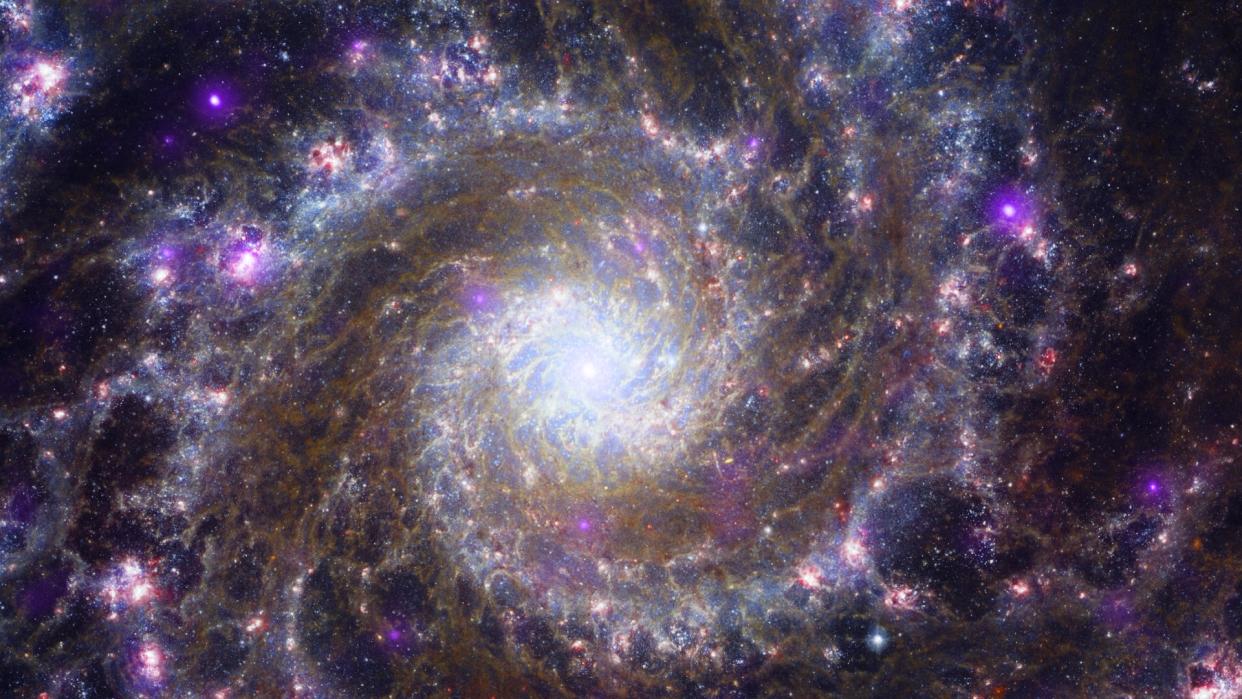
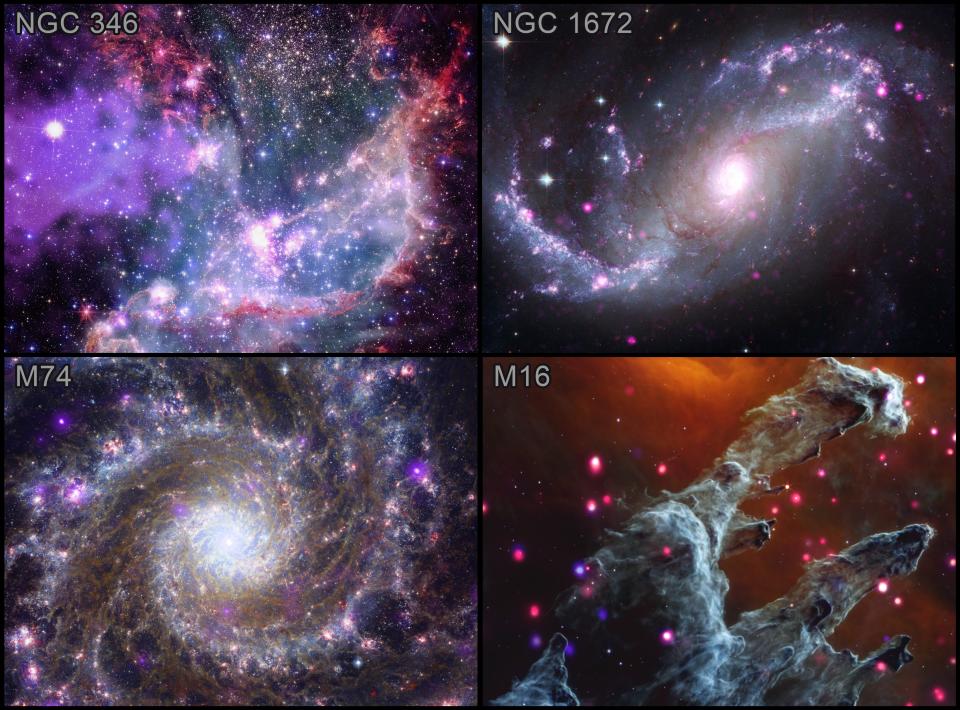
If you've ever wished you had X-ray vision, NASA has some photos for you.
NASA has released four composite images using data from several of its most advanced telescopes to depict our universe in different wavelengths of light, including data collected by the Chandra X-Ray Observatory, the James Webb Space Telescope (JWST) and the Hubble Space Telescope.
The images, which show two galaxies, a star cluster, and a nebula, are rendered in dazzling colors representing X-ray and infrared radiation, as well as optical light.
Related: James Webb Space Telescope (JWST) — A complete guide
The two galaxies pictured are called NGC 1672 and M74. Categorized as a barred spiral galaxy for its straight, "barred" arms of stars near its center, NGC 1672 is a galaxy about 60 million light-years from Earth. The new composite image shows several areas, especially in its outer arms, emitting intense X-ray radiation, shown in purple. According to NASA, these areas represent super-dense objects, such as neutron stars and black holes, that are pulling material into the galaxy.
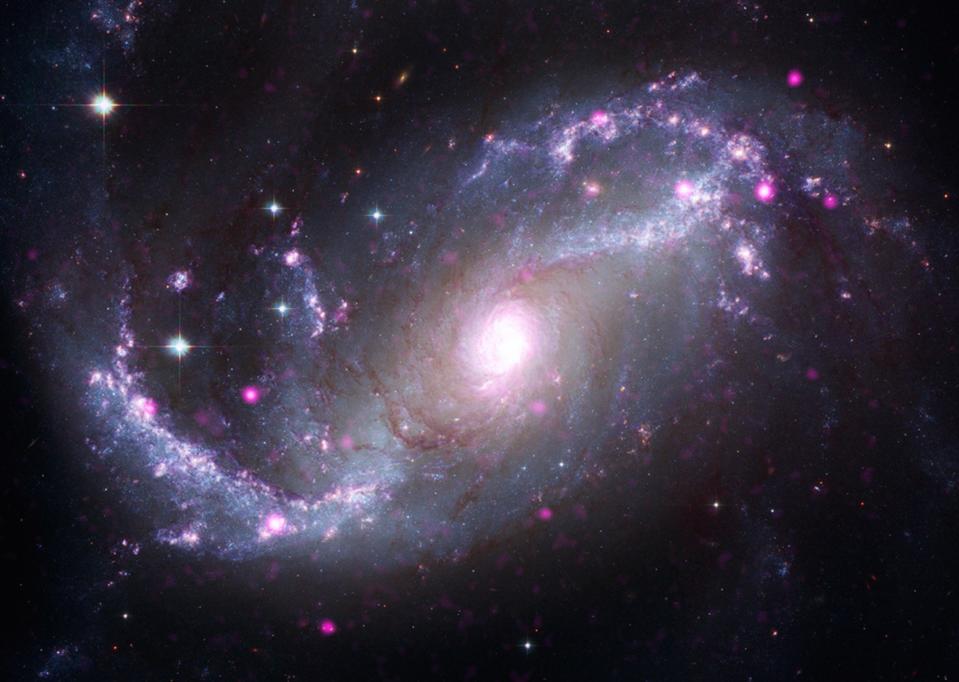
M74 is a spiral galaxy like our own galactic home the Milky Way, located about 32 million light-years away from us. Also called the Phantom Galaxy because it is visibly very dim, the galaxy has an intricate lacey structure revealed by JWST. Now, data from Chandra notes multiple sources of X-ray radiation, including young stars, dotting the spiral.
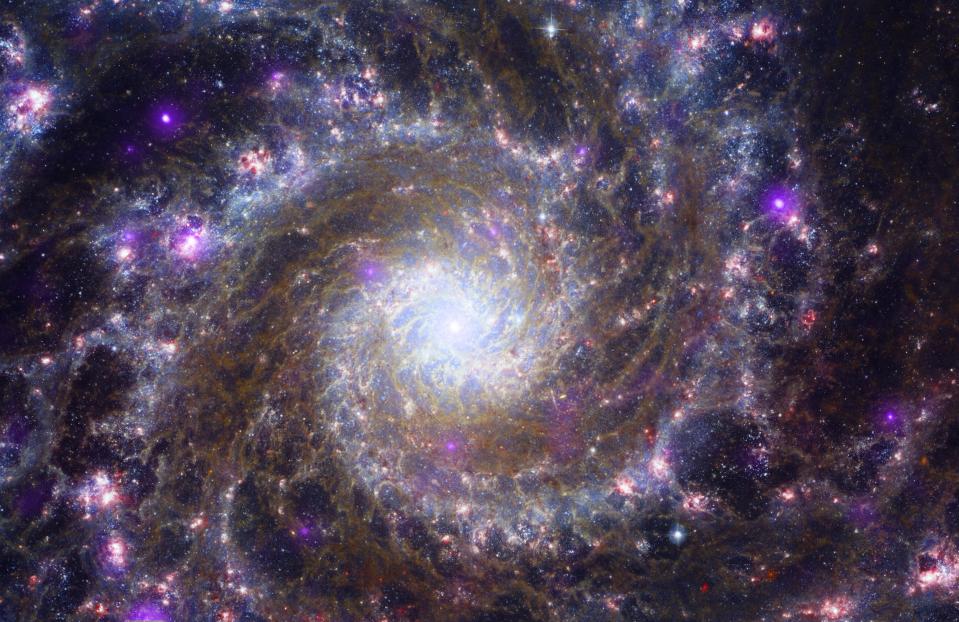
Another image shows M16, also called The Eagle Nebula, which is about 6,500 light years away. The image shows the nebula's famous "Pillars of Creation," dramatic clouds of dust and gas containing young stars, the most intense of which are highlighted in brilliant pinks and purples to show the powerful X-rays they emit. The image highlights the finding that most of these young, X-ray-emitting stars are actually outside the pillars, with only a few young stars emitting this intense radiation from within the clouds.
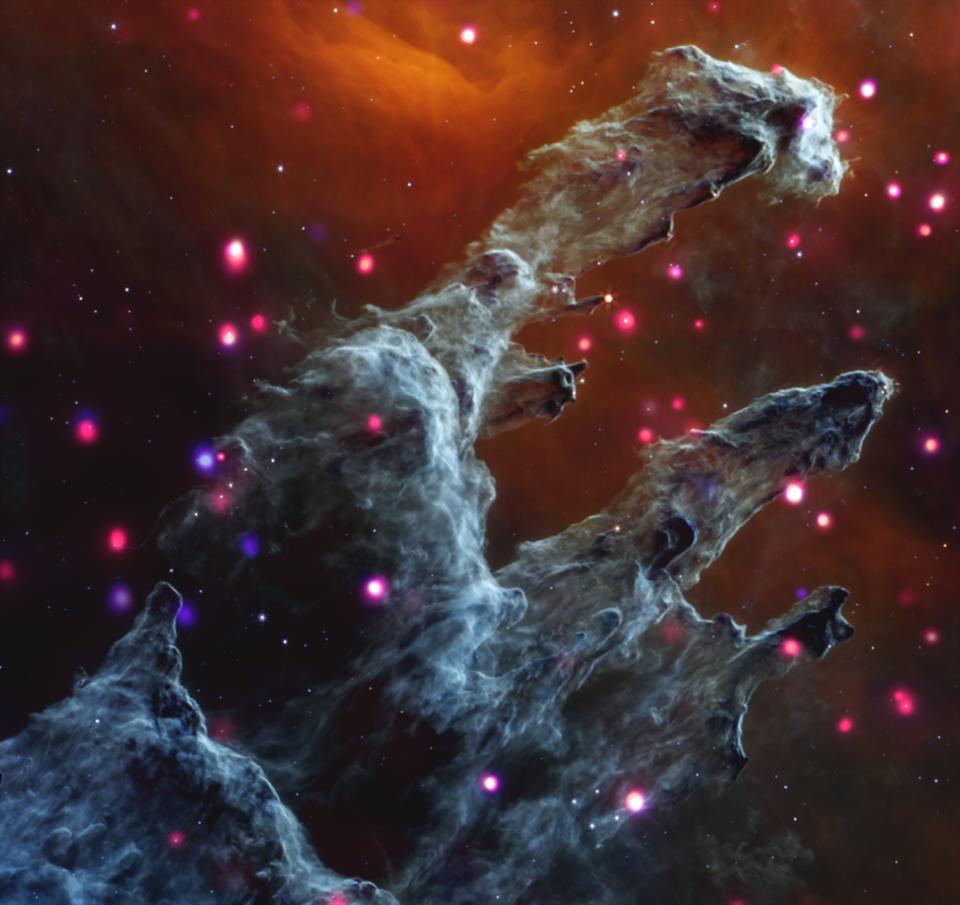
The image with the most notable contribution by Chandra might be of NGC 346, a star cluster in the Small Magellanic Cloud, a galaxy 200,000 light-years from Earth. A bright purple splotch on the left side of the image highlights the remnants of a supernova explosion, the spectacular death of a huge star.
Read more: This new supernova is the closest to Earth in a decade. It's visible in the night sky right now.
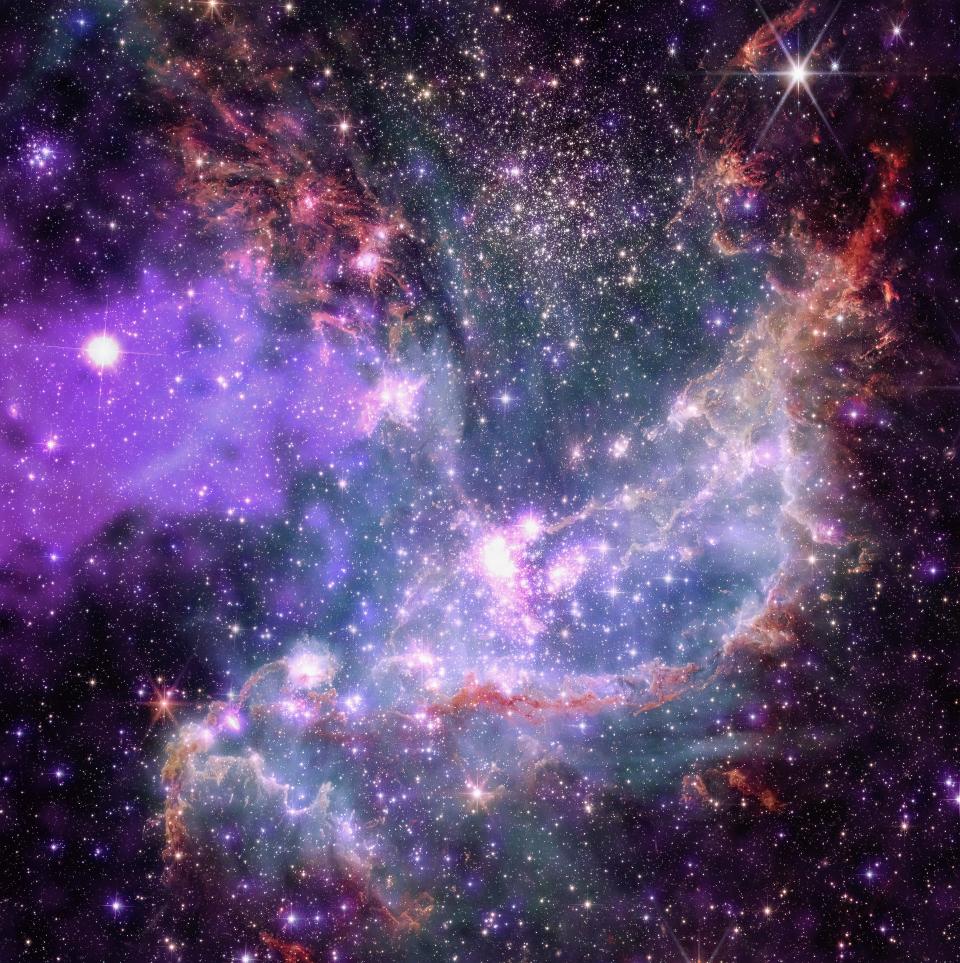
RELATED STORIES:
— Milky Way's cosmic neighbors help bring ancient galaxies into focus
— Cosmic monsters found lurking at heart of ancient star clusters by the James Webb Space Telescope
— Private servicing mission could extend life of NASA's Chandra space telescope
The NGC 346 cluster is also speckled with purple-white blotches of X-rays emitted from young, massive stars. This image is unique among the four, as it contains data from not only Chandra, Webb, and Hubble, but also the European Southern Observatory's New Technology telescope, the European Space Agency's XMM-Newton telescope, and NASA's retired Spitzer Space Telescope.
You can find all the photos, including the photos combined to make the composite images and 3D-printable tactile plates of each image, on the Chandra X-Ray Observatory's website.

